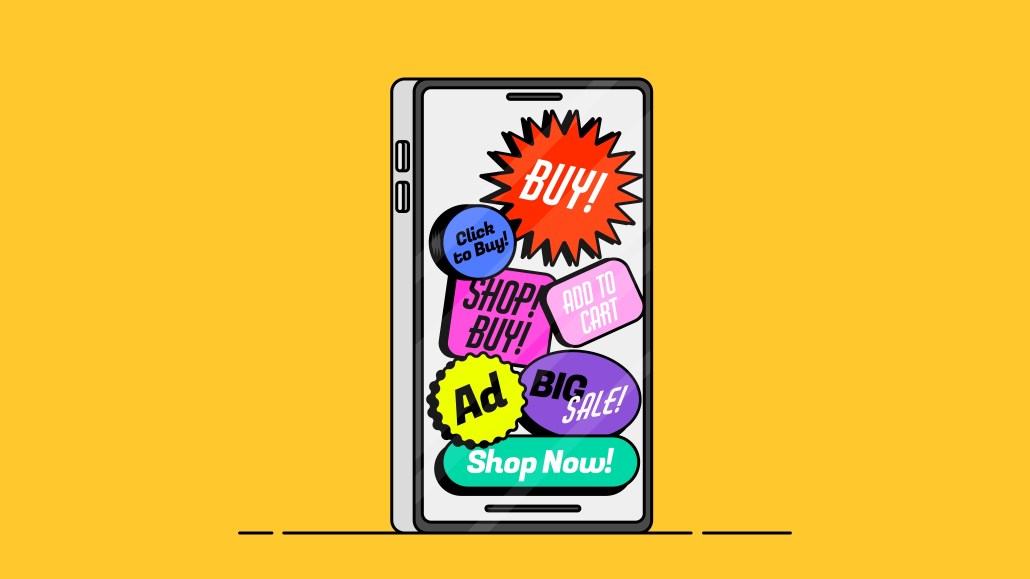Save 50% on a 3-month Digiday+ membership. Ends Dec 5.
Why acquisitions could be the inevitable future for embattled in-game ad companies

As game developers step up their activity in the mobile space, they are looking to build out internal in-game advertising departments — and acquiring an embattled in-game ad company might be the best way to do that.
The past few months have been relatively rocky for the nascent in-game advertising industry. Some measurement platforms, such as DoubleVerify, won’t fully adjust to the IAB’s updated in-game measurement guidelines until 2024; without access to accurate figures, brands have grown more skeptical of in-game ad companies’ free-to-play mobile/PC inventory. Earlier this month, the in-game ad firm Bidstack sued Azerion Technology for withholding payments, causing the in-game ad firm’s share price to plummet.
Despite these discouraging signs, in-game ad firms’ mobile gaming focus could work in their favor in 2023. Mobile gaming has exploded in the past two years, particularly in markets such as South Asia, where gaming consoles and PCs are prohibitively expensive. Between 2022 and 2023, worldwide downloads of mobile gaming apps grew by 8 percent year over year, according to data.ai’s State of Mobile 2023 report.
As game developers and big tech companies alike realize the revenue-generating power of mobile gaming, they have engaged in a flurry of merger and acquisition activity, with major game industry corporations such as Activision Blizzard and Take-Two Interactive purchasing mobile game developers like King and Zynga in a bid to expand their available mobile inventory. Having secured this inventory, these companies are now turning their acquisition sights toward ad tech firms to help convert it into advertising revenue.
“The best hope for a lot of these companies [in terms of a long-term future] is that they get bought by a big platform to help power their own ecosystem. Any such deal could happen soon, but they’re likely to happen at fire-sale or acqui-hire prices,” said one source with inside knowledge of the finances of the leading in-game advertising players, who declined to be named.
“You could have the likes of Activision buy one of those outfits to power their own stack, and ask for a minimum $20 million a year,” speculated the source, adding that most in-game ad companies would struggle to meet any such requirement.
Zynga hasn’t been coy about its plans to develop a robust internal in-game ad business. The corporation acquired its first in-game ad company, Chartboost, in May 2021, following it up by purchasing the mobile growth and app store optimization company Storemaven in September 2022.
“Zynga has always been good at live operations and retaining customers and developing best practices around live ops,” said Zynga Chief Product Officer Scott Koenigsberg. “But we started to realize, with the changes in privacy and to the ad tech landscape, that we wanted to kind of control our own destiny.”
This isn’t the first time the in-game advertising industry has found itself at the cusp of a potential run of M&A activity. The rise of the first crop of in-game ad companies in the mid-aughts culminated in Microsoft’s acquisition of the early in-game ad firm Massive Incorporated in 2006 — only for Microsoft to eventually shutter the company in 2010, ushering in a dark period for in-game advertising.
“It’s like 2010 all over again,” said Dave Madden, president of in-game advertising company PlayerWON. “We’re kind of unwinding from a window of tremendous exuberance in all things technology and digital and advertising and it sounds like an amazing idea — I just don’t know that there’s room for 10 companies to do it.”
This time around, the situation has changed. Games have gone from a niche hobby to a pillar of mainstream popular culture, and the number of gamers worldwide has ballooned into the billions. The rise of programmatic advertising has made it unnecessary for game developers to hard-code brand integrations directly into their worlds. With Microsoft and Sony reportedly spinning up their own in-game ad departments, game developers across the industry are looking to follow suit.
“If you can come to advertisers and say, ‘I can touch all of the audiences that you want,’ to varying degrees, that’s more powerful than not, separate from the M&A justification,” said Chris Petrovic, Chief Business Officer of mobile game developer FunPlus. “In-game advertising continues to be a rising interest to mobile game developers.”
Correction: This article originally reported that Oracle Moat would not have a measurement solution for in-game ads until Q1 2024. Moat launched an in-game display viewability solution in March 2022.
More in Marketing

Behind the rise of the chief productivity officer and what it means for companies and employees
The CPO is envisioned as the leader who orchestrates people and technology together to drive business outcomes.

OpenX redraws the SSP-agency relationship
The gradual realignment of programmatic’s middlemen discussed at Digiday’s Programmatic Marketing Summit.

Omnicom’s reshuffled leadership emerges as the ad industry’s new power players
Omnicom’s Black Monday saw thousands of jobs cut, and a chosen few put in charge of what is now the world’s largest marketing services group. They face a number of challenges, however.








